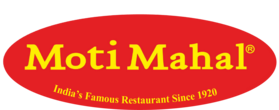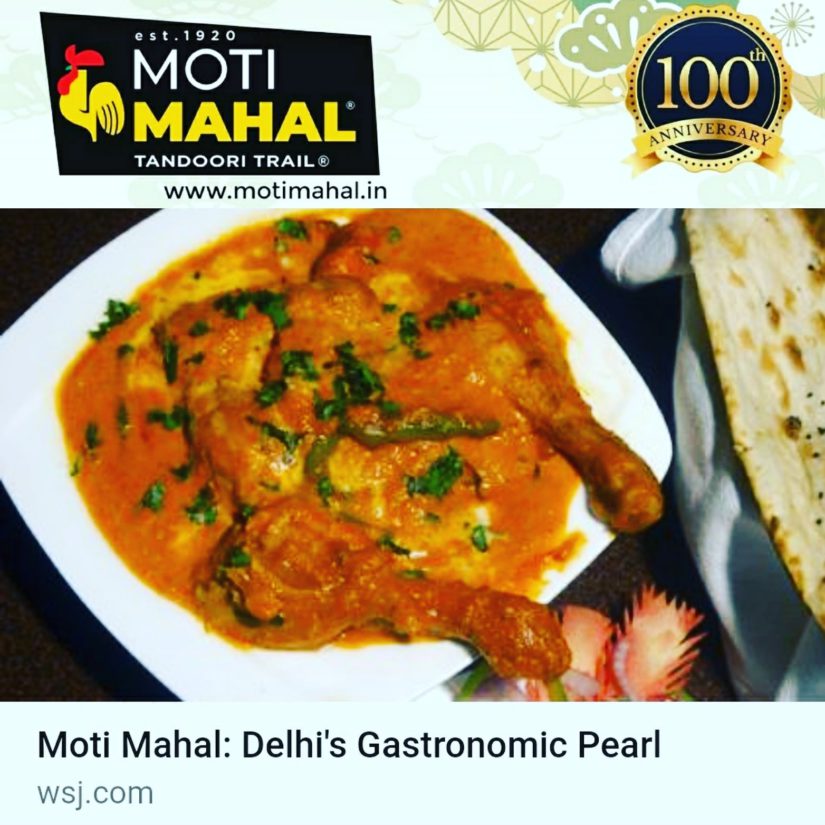
WALL STREET JOURNAL
Moti Mahal: Delhi’s Gastronomic Pearl

A view of the tandoor at the earliest Moti Mahal restaurant in 1948 where a cook is seen putting bread inside the tandoor to cook it .
MONISH GUJRAL
Moti Mahal (Palace of Pearl), one of the oldest restaurants in Delhi, helped spread to the world one of India’s iconic cuisines: Tandoori food. It is also credited with inventing dishes such as “dal makhani” — black gram lentils with tomatoes, cream and butter — and “butter chicken” that have become hallmarks of Indian food globally.
What began as a small eatery in Peshawar in British India, the restaurant later reopened in Delhi in 1947 after Partition. It has been an institution in the capital ever since and has established several branches. Maulana Abul Kalam Azad, independent India’s first education minister, is said to have once told the Shah of Iran, “Visiting Delhi and not going to Moti Mahal is like going to Agra and not visiting the Taj Mahal.”
As part of our “New Delhi@100” series, India Real Time traces the journey of Moti Mahal – now in its 91 year.
In the 1920s, in Peshawar in undivided India, a boy aged 12 started working as a kitchen helper in an eatery called Moti Sweets. Having lost his father at a very young age, he had to start earning early in life. When the eatery’s owner died a few years later, the boy took over the chain as the owner was very fond of him. He renamed the place “Moti Mahal.” The young boy was Kundan Lal Gujral.
The restaurant’s signature dish of ‘Tandoori Chicken.’
 MONISH GUJRAL
MONISH GUJRAL
“Once a customer demanded that he wanted a lighter option rather than the usual gravy-based dishes of Korma, which are cooked in oil and thus very heavy,” recalls Monish Gujral, the founder’s grandson and now managing director of the chain. “So to please the customer, K.L Gujral thought of experimenting with chicken and marinating it with yoghurt and using the tandoor (open hearths),” he added. This is how the “tandoori chicken” was born.
Kebabs were invented in Turkey and the tandoor had been used for centuries to cook breads. But Mr. Gujral claims it was the first time the kebabs were grilled rather than fried. He adds that, once the tandoor came to be used, the options to experiment were almost endless.
Butter chicken, too, had humble beginnings. When the founder realized that dry pieces of tandoori chicken go bad very quickly without refrigeration, he decided to add gravy to them. He took the leftover pieces of tandoori chicken and cooked them over a low flame in a gravy of butter, spices, cream and tomatoes. The result was butter chicken, a dish that is now a staple of Indian restaurants around the world. The same gravy recipe was then used to make dal makhani.
Moti Mahal had already established itself among the British elite in Peshawar but the challenge came with Partition, when K.L. Gujral had to move to India and start a new life as a refugee.
The restaurant’s other famous dish – ‘Butter Chicken.’
 MONISH GUJRAL
MONISH GUJRAL
But he came from a more privileged background than most other refugees, so starting afresh was less of a struggle. “My grandfather was among the few rich people who flew to India rather than taking the train,” said Mr. Gujral.
“My grandfather stayed in a refugee camp initially and thought of setting up a dhaba (roadside eatery) to introduce Delhiites to the tandoori chicken. He finally bought a small space in a corner in Daryanganj and thus set up Moti Mahal in the city,” Mr. Gujral said. The place quickly proved popular and within a year K.L. Gujral bought the adjoining area, turning his eatery into a 400-seat restaurant. K.L. Gujral also tried to make Moti Mahal a different experience by introducing live “qawwali” (a form of sufi devotional music) and a see-through kitchen.
Dignitaries like former prime ministers Jawaharlal Nehru and Indira Gandhi, former Indian President Dr. Zakir Hussain, actors Raj Kapur and Nargis, and Soviet leader Mikhail Gorbachev are among the famous patrons.
With time, Moti Mahal changed, too. While it retained the signature dishes of dal makhani, butter chicken, tandoori chicken, chicken pakora (fritters), the restaurant reinvented itself to suit the changing palate of the Indian customer. They introduced tandoori dishes made with broccoli, trout and lobster.
Dr. Zakir Hussain, extreme left, seen in this picture with K.L. Gujral, first from right.
 MONISH GUJRAL
MONISH GUJRAL
“Indian customers are now exposed to a lot of international eating and want not only better presentation but also varieties that are good for health,” Mr. Gujral said, adding that customers are now more health conscious and thus demand more barbequed stuff.
What is also interesting to note is the price for the dishes: in the early post-Independence days, the restaurant used to sell a portion of tandoori chicken priced at one rupee and butter chicken at 1.25 rupees. Today, these are priced around 500 rupees ($10) and 650 rupees, respectively. Mr. Gujral serves over 100,000 butter chickens in a year.
Monish Gujral, the founder’s grandson, outside one of the restaurants under the chain.
 MONISH GUJRAL
MONISH GUJRAL
Mr. Gujral instituted Moti Mahal Delux Management Services in 2003 with the objective of expanding the business into franchises across India. Today, it has grown from a small restaurant in Old Delhi to a modern eating chain with more than 150 company-owned restaurants and franchises in India and abroad and he plans to expand at the rate of two restaurants a month.
“The first thing I did when we started the franchise model was to standardize the recipes,” he said. “I couldn’t have a chain serving different recipes, so all chefs are trained by Moti Mahal, thus ensuring the quality remains the same.”
Follow India Real Time on Twitter @indiarealtime.





